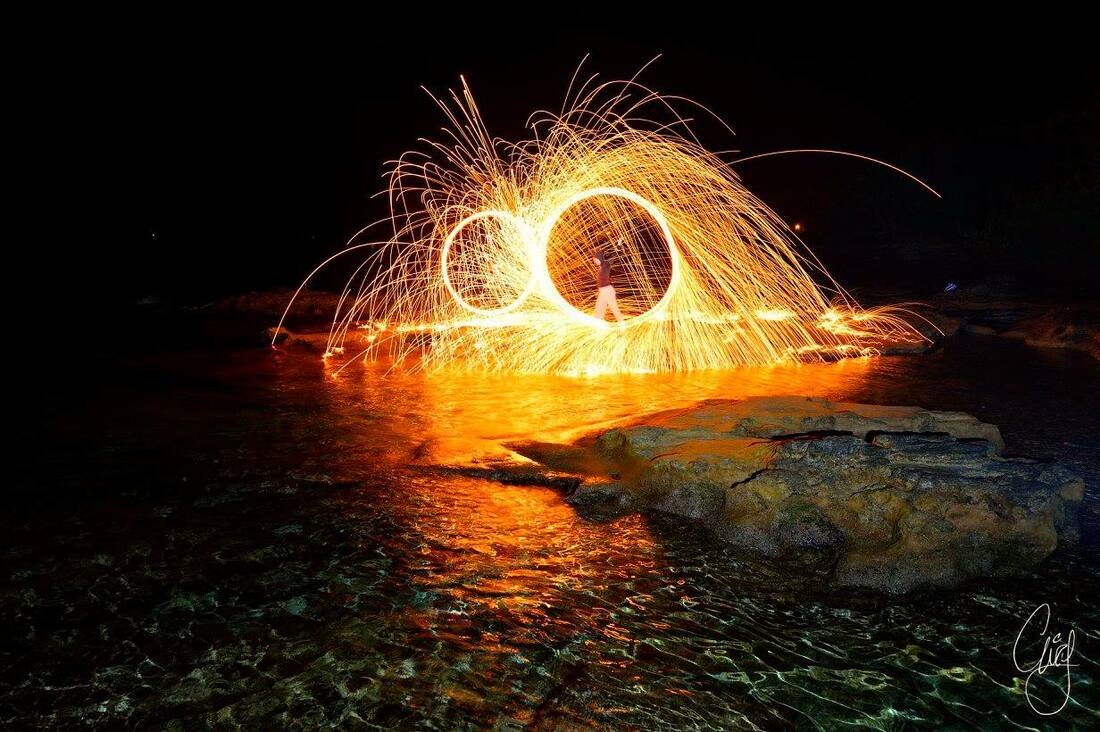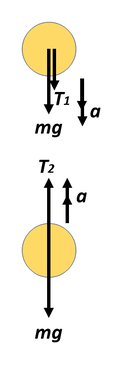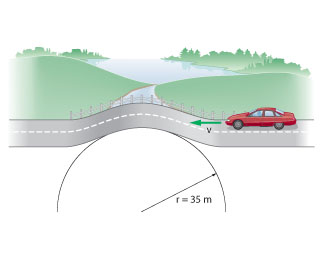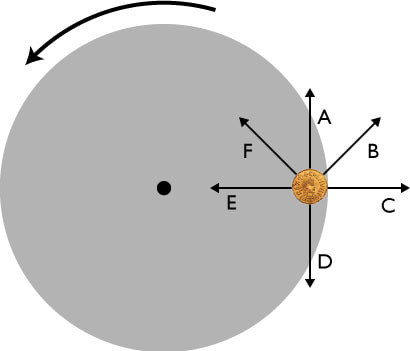Hannah Emmerson of Bermuda Sandcastle fame fire spinning on Southlands Beach (Photo: Chris Ingham)
3.2 - Motion in a Vertical Circle
Objectives:
- To be able to consider the changes in the forces acting on an object that is moving in a vertical circle and relate this to observable phenomena
Vertical circles are a little harder to work out. As a general rule the speed is not constant as the object moves around. It speeds up on the way down and slows down on the way up. Luckily, for this course we are only really interested in the situations at the top and bottom of the motion. An example of a vertical circle is shown by Chris Ingham's photo of Hannah firedancing below.
The burning bits are wads of kerosine soaked cloth enclosed in a wire mesh and attached to chains. At the top of the burner's arc, both the tension of the chain and its weight are acting downwards, the tension in the chain is reduced. At the bottom of the arc, the tension is working upwards and weight is working downwards. The tension in the chain is greatest at the bottom. Both situations are dynamic as the motion is changing.
|
At the top:
\[\sum{F}=ma\] \[T_1+mg = \frac{mv^2}{r}\] |
At the bottom:
\[\sum{F}=ma\] \[T_2-mg = \frac{mv^2}{r}\] |
Often the question posed is what is the minimum speed required at the top to keep the object moving. In this case the limiting case is when the tension in the chain becomes zero and weight alone is providing the centripetal force. So, simply set \(T_1 = 0\) and solve. Other scenarios would be what is the maximum speed that a car can go over a rise in the road, and in this case the normal force becomes zero as the car just leaves the ground. Solve by careful use of a free-body diagram and using \(\sum{F}=ma\) as above.
|
Animation of vertical circular motion. Shows how the tension in the string varies
Still from a VideoPhysics recording of Aiden demonstrating that if a bucket is whirled fast enough the water does not fall out! At the top:
\[\sum{F}=ma\] \[N+mg = \frac{mv^2}{r}\] set \(N=0\) \[mg = \frac{mv^2}{r}\] \[v^2=rg\] In this case: \[v= \sqrt{1.2\times9.81} =3.4\,\text{m/s}\] |
|
Classic Bump in the Road Problem
What is the maximum speed that the car can go over the bump without leaving the ground. The key here is to realise that this a circular motion problem. Then it is straightforward. The point where the car leaves the ground causes the normal force to be zero. As the normal force is the force exerted on the car by the ground. Motion is changing, so \[\sum{F}=ma\] \[mg - N = \frac{mv^2}{r}\] Set \(N=0\) \[v=\sqrt{rg} = \sqrt{35 \times 9.81} = 7.0\,\text{m/s}\] |
|
AP-1 Style Questions
There are quite a few potential ones for this topic. Classics can involve a coin placed on a turntable. Multiple choice questions could be; which vector shows the net force on the coin or the coin slips, which way does it go? A lab-based task could involve figuring out how to use the coin and the period of rotation to determine the coefficient of static friction between the coin and the disc. Remember - a good experiment involves producing a graph, preferably linearised so the gradient can yield a quantitative result. |
LAB WORK
There are a few standard lab assignments that are used for this topic. The moments (torque) experiments are easily set up and generally involve masses, string, newtonmeters and planks of wood. The circular motion lab involves whirling a rubber bung on a string around your head to demonstrate the centripetal force equation....!
Additionally, it is nice to attempt a project-based lab:
Additionally, it is nice to attempt a project-based lab:
- estimating how the tension in the spoke of a bicycle wheel vary as a function of speed - this could also involve the relative position of the spoke to the ground.
- measuring the speed of a bucket of water whirling in a vertical circle using an ipad, what is the minimum speed required to keep the water in the bucket?
- measuring the range of a whirling ball on a rope that is let go at the top of its flight - involves measuring the speed of the ball (either with stopclocks or an ipad), and some projectile kinematics.
- how does the turning moment of a yacht vary as the angle of heel is increased? Is there a limit - assuming that the force on the sails is applied horizontally? Extension: how does the tension in the shrouds vary?
- how does the tension in a spinnaker guy vary as the boat goes from a run to a reach? Could this be measured?
Investigative Work
- What is the minimum speed necessary to keep water in a bucket from spilling. Demonstrate this using the VideoPhysics app
- Whirling a ball attached to a rope around your head and then releasing it. What is the maximum range of the ball?
- Same idea, but this time whirling in a vertical circle!
- Analysis of vertical circular motion using the VideoPhysics app. Could you use a newtonmeter?
- Measuring the speed of a conical pendulum and comparing with the theory. Use either lightgates or VideoPhysics app.
Suggested activities:
- Find a data table on car stopping distances. Students determine the coefficient of friction from this data, then create a new table of car speed against minimum turning radius.
- A pendulum of (say) 2 N weight is swinging. At the bottom, it is neither speeding up or slowing down. What is the tension of the string?
Other Resources
PhET Simulation - Balancing Act
PhET Simulation - Gravity and Orbits
|
|
|
$\sum_{k=1}^n k = \frac{n(n+1)}{2}$




